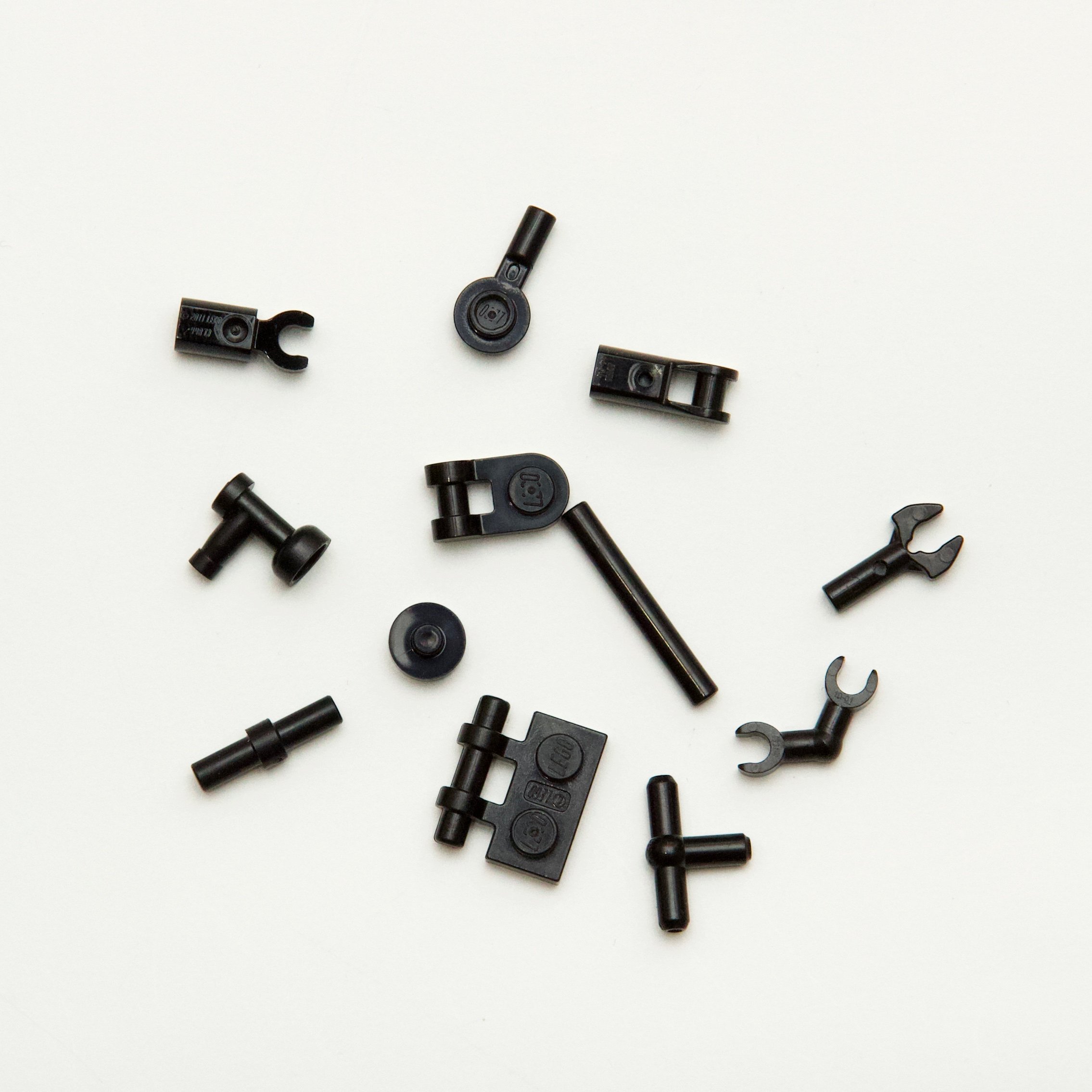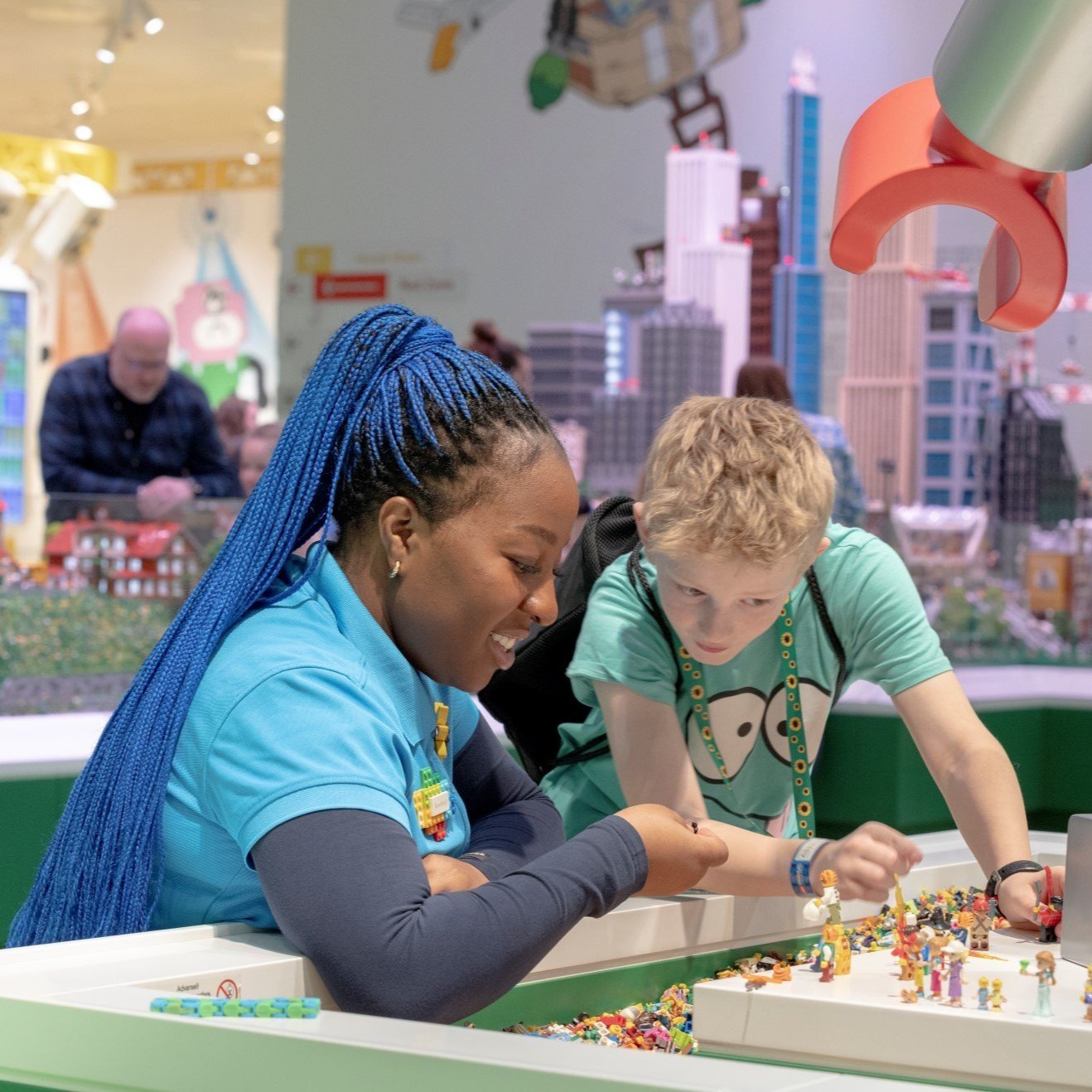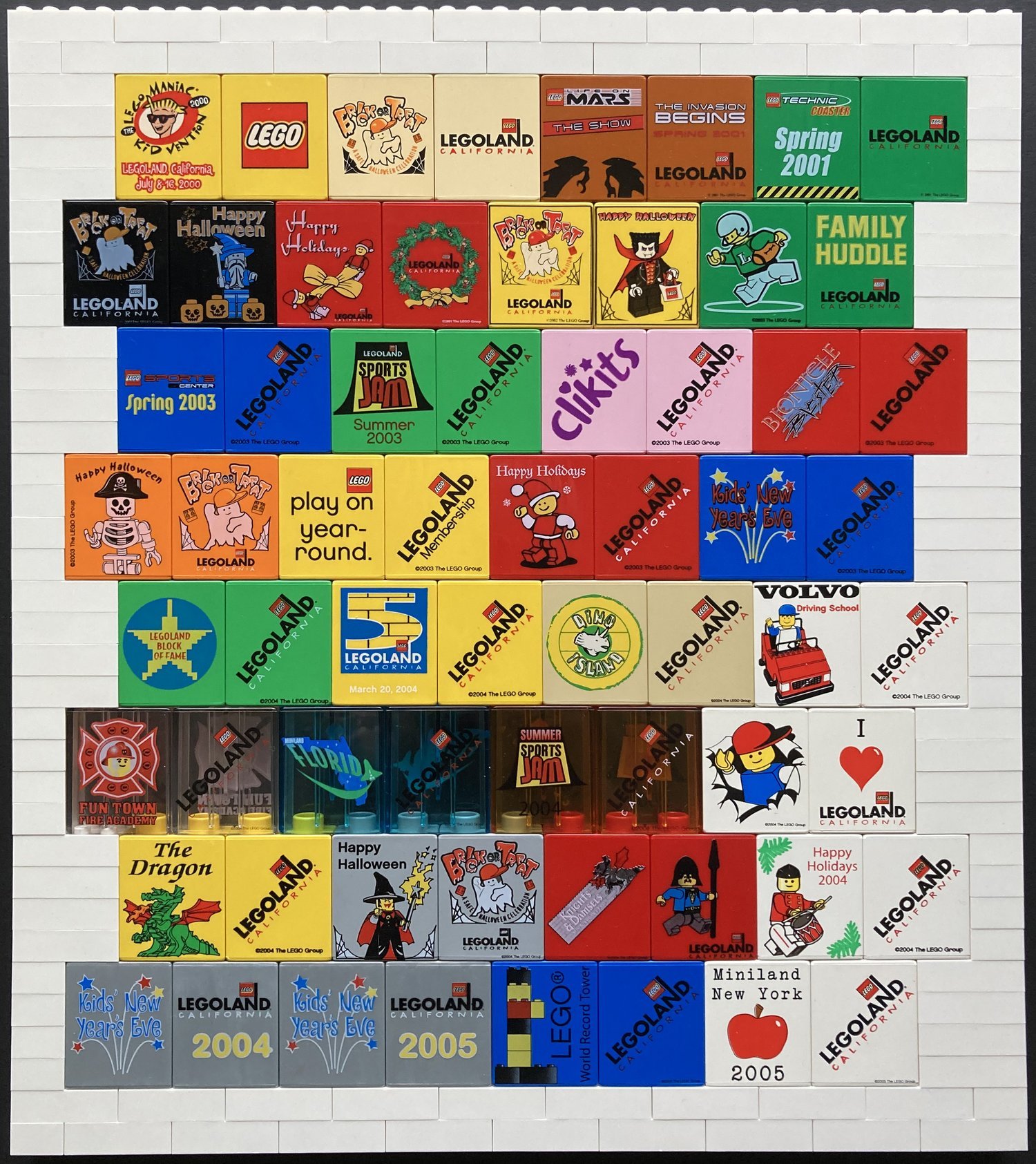How to Build Bionicle: Combining Constraction with the LEGO System
/LEGO is known for its grid of studs with perfect right angles and straight sides. But more and more, builders are pushing what the LEGO System is capable of by using a few special pieces to fine-tune those angles. Today we will take a look at some of the techniques to achieve that more organic look by combining Bionicle and System elements.
Terminology
Before we get started in this article, I thought it would be useful to go over a bit of the key terminology I mention. Knowing these terms will really help as you start merging Bionicle and System builds.
Constraction: A combination of construction and action, generally referring to pieces, sets, or MOCs related to Bionicle, Hero Factory, Chima Buildable figures, Star Wars Buildable Figures, Galidor or Ben 10.
CCBS: Character and Creature Building System.
Mixel Joint/Ball: The ball and socket system released in Mixel sets.
G1/G2: 1st Generation or 2nd Generation of Bionicle.
System: Used for simplicity in this article as a general term referring to pieces with LEGO studs or anti studs.
Basics of Bionicle
Let’s start off with the basics of Bionicle, overviewing the types of pieces that have been released over the years, and how to continue building with them without new molds being released. There are hundreds of unique Bionicle pieces, some only being released with a single set they were designed for. Technic and Bionicle were heavily integrated throughout the theme, so axles, pins, and ball joints are the three major types of connection you will find. This means that common ways to combine system and Technic will also work with system and Bionicle.
After the first generation of Bionicle ended, Hero Factory was released shortly afterward which opened up constraction builders to a whole new system of pieces to work with. It was a system that was more reliant on ball joints and bar/clip connections and much less on Technic. This new system was referred to as CCBS (Character and Creature Building System) and consisted of bone and shell pieces that are very modular. Ball joints are used to connect bones to shells, and bar holes are used to connect shells to any kind of extra armor or accessory. Having so many system pieces with 3.18 mm bars or clips opened up CCBS to much easier integration.
Hero Factory Bone Skeleton.
Along with Hero Factory, three more themes used CCBS during its lifetime: Marvel/DC superheroes, Legends of Chima, and Star Wars. All three were large buildable figures of famous characters such as Iron man or Darth Vader. Each of these added some very unique pieces to the system due to each theme's specific needs. After Hero Factory ended, LEGO did something no one expected and revived Bionicle, using CCBS instead of making completely new molds for everything again. Sadly, though, the 2nd Generation of Bionicle did not last long, so not nearly as many new innovations were brought about compared to other themes.
As if that all wasn't enough, there are a few more small themes that add to the pile of constraction pieces for use. Ben 10 had six sets that had a very unique and useful system created almost exclusively for it. Knights Kingdom II had buildable figures using ratchet joints and were very system based. Galidor also uses ratchet joints but has entirely unique molds that are very specialized for the theme.
Across all these themes, there are over 1,000 unique pieces were made that can be considered "CCBS” elements, but no pieces like these are being produced anymore. With this limitation, how does one start and continue constraction building?
Integrating System With Bionicle
1,000 pieces is a lot to work with in constraction building, but many years without new parts has led to the need to integrate System with Bionicle more and more. This has multiple benefits to it: it can be cheaper to buy parts, brings a much wider part selection, and there are always new pieces to experiment with. Being able to fill in gaps or get that perfect shape using smaller pieces creates a huge draw to mixing both building systems. The big question is how do you actually start combining the two? A 2x4 brick and a Bionicle limb sure don't look like they work together…
There are actually three primary ways to merge System with constraction pieces: Technic System hybrid pieces, Bars and Clips, and Mixel Joints. Let’s take a closer look at each technique.
Technic System Hybrids
Pieces such as Technic bricks have a huge use in constraction building with most Bionicle parts containing some sort of Technic connection. One of the benefits of these over other options is their sturdy connection with both Technic and System. Using pin connections allows for movement in one direction while still retaining the same strength.
Beyond standard Technic bricks, pieces such as 3941 2x2 round brick and both 18677 and 11458 1x2 plate with pin hole also have their uses. The 2x2 round notably finds great use in limbs, for its round shape and strong Technic connection.
2x2 Round Bricks used with 2x2 Cones as forearms in this build from Patrick Biggs.
Boat Stud Joint.
Using Technic conventionally works wonderfully, but we also can't forget about the extremely useful ability to connect studs to pin holes. This creates strong connections in smaller spaces and opens the number of usable pieces significantly.
A very popular use of this is called the “boat stud joint” by using 2654 sandwiched by Technic pin holes. The joint is not only small but very strong for what it is and has a variety of ways to connect to it.
Boat Stud Joints used on Legs | 1x2 round plates used instead of boat studs on arm joints in this build by Cody Avery.
Two less popular hybrids are the ratchet joints and ball joint bricks. Generally, these tend to be a bit large and bulky for constraction builds, nonetheless they do find use still. Larger builds that have more weight may opt for ratchet joints because they have the space and need the strength they provide. Otherwise, though, these don’t see much action as there is normally a desire for a smaller more customized details around the joint.
Bars and Clips
You will hear constraction builders refer to bars and clips all the time, but what exactly do they mean? There are a lot of pieces that could fall into this category. Generally, they are referring to small pieces (think 1x2 brick or smaller) that allow for that perfect angle to be achieved in a small space to active a more organic look.
A prime example of this is 98313 Exo Force Arm—while keeping a small profile, this piece has both a clip and two bar hole connections. Three common uses are as fingers, either by themselves or in addition to other parts, as an upper mouth or jaw, and in mass amounts along flex tube to create a repeated and flexible texture. But these are uses that don’t involve many other pieces, angles, or internal designs.
Exo Force Arm used as upper mouth and lower jaw in this build by Djokson.
Exo Force arms spammed Along the neck in this build by Anthony Wilson.
Exo Force hands with lots of poseability in this build by Matt Goldberg.
Though these MOCs use the element well, they really shine when combined with other elements in small spaces to achieve that perfect angle or shape. Many other examples of popular pieces to consider for this are 48729b Exo Force Claw, 11090 Bar Holder with Clip, 23443 Bar Holder with Handle, 32828 “Espresso Piece”, 26047 2540 1x1 and 1x2 Hinge Plate, 4697b Pneumatic T, 4599b Tap.
Each of these has become integral to Bionicle building and for good reason: there is no other way to replicate what each one of them does. Unlike with some standard SNOT techniques where there may be multiple ways to achieve the same thing, being confined to tight spaces means one specific piece is often needed to make the connection work properly.
Many of these pieces have claim to fame for being used in custom hands, feet, or heads. Obviously, Bionicle has its own hand molds but these are restricted by no finger movement, so a permanent fist is all you get
Two common custom hands compared to pre molded Bionicle hand.
Using the pieces mentioned above, we suddenly have multiple options for hands that have moving fingers and take up the same space as the single molded hand. These hand designs have been staples of Bionicle MOCs for decades and prove just how vital these kinds of pieces are to builders.
Conversely, you will rarely see a Bionicle build with the same head or feet, so those do not have as iconic, repeated uses for these pieces. Espresso pieces are one example having been used multiple times as eyes because of the micro bar hole in the 3.18 mm bar. It adds an extra level of detail and emotion to a build.
Espresso Pices used as eyes in this build by Jayfa.
As previously mentioned, CCBS shells integrate very well with bars and clips so they must be brought up in this section. They are quite useful for limbs, but sometimes the ball joint connection is too large or awkward. Using bars or clips opens them up to being attached in a much smaller profile and with a more versatile selection of parts compared to a standard ball joint.
Two popular ways to utilize this are with a normal Bionicle socket to provide much more freedom in shaping the rest of the limb. And as a wrist transition from a ball joint to a bar connection, this pairs quite well with some of the hands mentioned above.
I could keep going on and on about different uses of these pieces—the possibilities are legitimately endless. Hopefully, this has been enough to display how vital bar and clip pieces are to Bionicle building, from a simple hand design to the most complex, mind-bending head design. There is never a right or wrong way to use bar and clip pieces, so it’s always worth trying that one piece that might fit, no matter how strange of a solution it may seem.
Mixel Joints
The Mixel joint system is extremely versatile when it comes to connections, having studs included on top of the Mixel joint itself. I won’t go into the history of these pieces, as there could easily be enough material for a whole article there, but I will go over a few of the notable pieces that work within the system: 22484 Tow Ball with 1L Bar, 2736 Tow Ball with 1L Axle 6628a Tow Ball with 1L Pin, 30082 Tow Ball with Clip, 14417 1x2 Plate with Tow Ball, and of course the pieces that linked the whole system together 14704 1x2 Plate with Tow Ball Socket released in the Mixels theme. You can probably guess why these are in their own category, but if not, some useful examples may help sell you on them.
Before the creation of Mixel joints, small joints that could move in any direction were not very easy to create in LEGO. But since their release, they have found immense use as wrist and sometimes ankle joints for that exact reason. With the vast options of pieces with ball connections, it allows for many different designs of legs and arms that can still smoothly translate into a foot or hand. While their limited color pallet sometimes makes them stand out when exposed, this usefulness overshadows that issue nearly every time.
Mixel joints used as ankles in this build by Mischief.
Small-scale joints are incredibly helpful for internal structure as well. Instead of having to make multiple bar and clip connections to achieve different angles, a Mixel joint can be used instead. This reduces space, pieces, and the risk of the model falling apart.
mixel joints used as wrists for most of the hands in this build by Toddrick.
If that wasn’t good enough, Mixel joints are quite strong when connected and hold their angle quite well compared to some clips or Technic connections. So not only do these pieces come in handy for tight spaces in a build, but even more so in areas with more room to work due to their simplicity and strength.
Be Bold and Build Bionicle
There are so many more worlds more to explore when it comes to constraction building, but that will have to wait for another time. As with any LEGO building, there is no right way to do it, it just might take a few tries for it to be right for the exact look you are going for. Trying to accomplish organic shapes, Technic bricks, bars and clips, and Mixel joints will forever be your friends.
And who knows, maybe through all that trying you will also fall in love with this wonderful Bionicle building system as I have.
Will you try out a few of these techniques to achieve more organic builds? Let us know in the comments below.
Do you want to help BrickNerd continue publishing articles like this one? Become a top patron like Charlie Stephens, Marc & Liz Puleo, Paige Mueller, Rob Klingberg from Brickstuff, John & Joshua Hanlon from Beyond the Brick, Megan Lum, Andy Price, John A. and Lukas Kurth from StoneWars to show your support, get early access, exclusive swag and more.





































